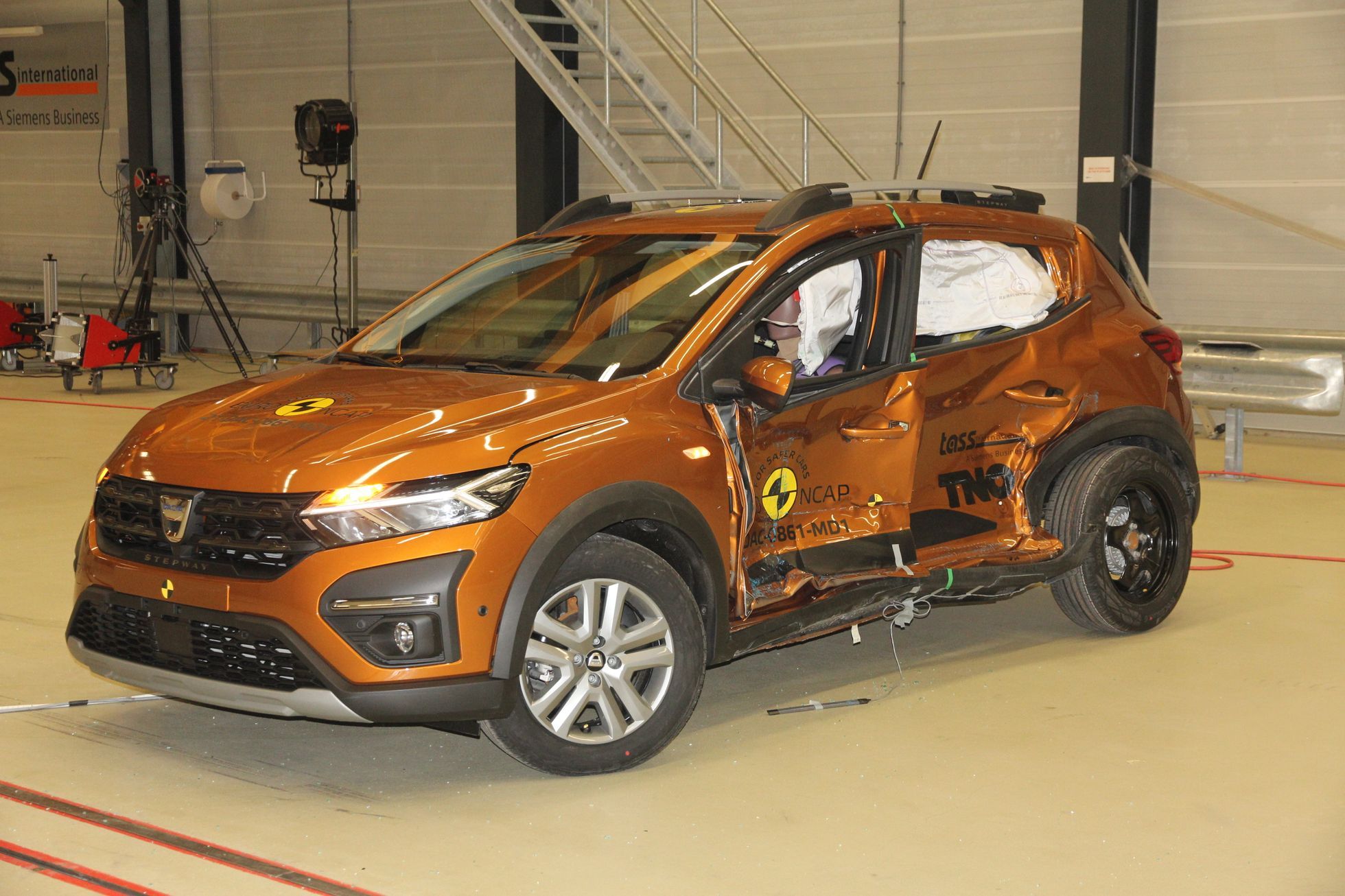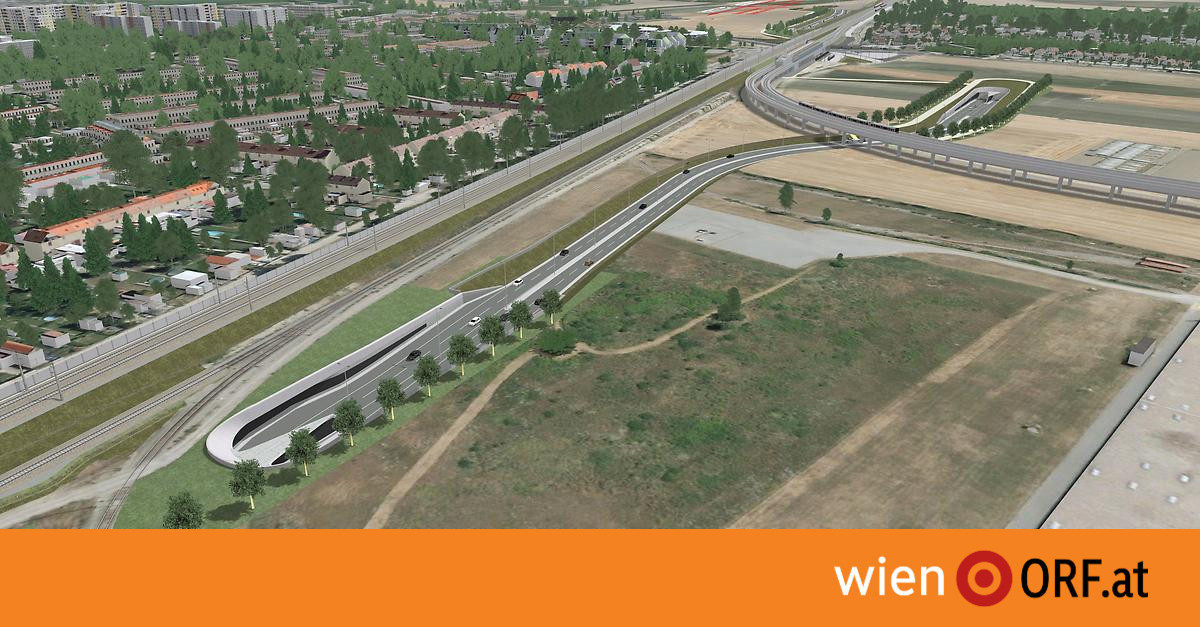The next round of Euro NCAP crash tests has fully demonstrated how much electronic assistance systems are needed for a good assessment. If the car has them and works the way they should, getting four or five stars is not so difficult, despite last year’s tightening of the rules. However, if the car is not equipped with them, it can be a problem for him. Dacia Sandero was clearly convinced of that.
Euro NCAP has “sent a Sandero Stepway against the wall with standard safety equipment. This includes six airbags, Isofix child seat mounts on the rear outboard seats, a speed limiter and an emergency braking system that detects cars with radar (but cannot detect pedestrians and cyclists). Result? In total, only two stars out of five possible.
The main culprit is the absence of electronic assistance systems to prevent or at least mitigate traffic accidents. “Dacia has clearly found the part of the market where it is successful and is sticking to it, but the gain of two stars indicates low ambitions, even if we are talking about a low-cost product,” Euro NCAP Secretary General Michiel van Ratingen said in a statement. “Their decision not to offer a camera (for the radar of the emergency braking system – editor’s note) it is disappointing and a step backwards in the market, because even Dacia must be aware that it will soon have to comply with the new safety regulations, “he added.
At the same time, he came across the fact that from about the middle of 2022, all newly introduced car models (all cars will have to have these elements two years later) sold in the European Union must have an emergency braking system that responds to other cars or standing obstacles. In the next phase, however, the system will have to respond to pedestrians and cyclists, which Dacia cannot do.
In addition, it does not have lane maintenance, which will also be mandatory for all new vehicles from 2022. Although Sandero has blind spot monitoring among the surcharges, the organization did not take this element into account in the evaluation.
As a result, Dacia received only 42 percent of the total possible points for assistance systems, and even only 41 percent of the total possible points for pedestrian and cyclist protection (the organization collectively identifies them as vulnerable participants).
The losses are mainly due to the lack of assistance systems, because the very protection of pedestrians in a collision with a vehicle has not been rated the worst. The bonnet provides sufficient protection for pedestrians’ heads, worse in the area of the front pillars, which are rigid, and the lower part of the windscreen. The protection of the pelvis in the event of a collision with the car’s bumper was also poor.
Given the below-average results in two of the four sub-categories, it is then clear why Dacia did not receive more than two stars. In mathematics, it could not even evaluate, because the results in the individual categories must be balanced for more stars. However, Euro NCAP states in a statement that the protection of the crew in the event of an accident alone is at a level that would still be sufficient for a four-star rating.
However, if there were no missteps in other parts of the evaluation, the organization adds. So it’s definitely not a dangerous car, as the overall result might suggest. However, the low price simply reached its limits.
When evaluating the frontal impact, Dacia gained a relatively average of 70 percent, while the space for the crew remained stable even after the impact. On the other hand, some dashboard structures proved to be problematic, which could endanger passengers with different heights and positions in the front seats.
In any case, the evaluation of the protection of the monitored areas at the manikin in the event of a frontal impact into the mobile and fixed barrier was the worst average. However, the Dacia does not have a center airbag, which worsened the rating in a side impact on the right side of the car. The shape of the rear head restraints proved to be not very suitable for protecting the cervical spine in the event of a rear-end collision.
Check out a video from Dacie Sandero’s crash test
Emergency and safety tests of Euro NCAP model Dacia Sandero Stepway 2021 | Video: Euro NCAP
–
It is worth recalling here that Euro NCAP has significantly revised its ratings since 2020. Newly, it not only tests the frontal collision with a fixed barrier across the entire width of the car, but also the frontal impact with 50% overlap, but into a mobile barrier weighing 1400 kg. It moves at a speed of 50 km / h, just like a car. The side test was also modified, where a higher impact speed is needed from last year. A new right side impact test is also being tested when only the driver is sitting in the car. The belt does not hold him by the shoulder on this side, but only at his waist.
The central airbag thus provides better protection, but it is not so widespread yet. This then helps in a side-on collision when the driver and front passenger are sitting in the car, thus preventing them from colliding with each other. You can read more about the new rules, where the safety after the impact and the access of rescuers to the crashed car are also more strictly assessed here:
Dacia’s child safety was rated at 72 percent of possible points. Euro NCAP notes that the same result applies to both the Sandero and Sandero Stepway and the technically virtually identical Logan sedan. Romanian carmaker, whose statement he quotes British magazine Autocar, pointed out that she would receive four stars when assessing the passive safety of adults and children. He also mentions the very good performance of his car in a collision with a pedestrian.
“In the area of active safety, which Euro NCAP is placing increasing emphasis on, we have decided to equip the car with the best value for customers. An autonomous emergency braking system is standard, including blind spot monitoring,” says Dacia. “The new Sandero and Sandero Stepway are safe cars and provide passengers with a high level of protection. But we take test results seriously while continuing to offer a balanced balance of safety, availability and customer expectations,” the manufacturer added.
If the organization was not very happy with Dacia Sandero, it was already with the other two models in the last round of tests. These are electric SUVs Škoda Enyaq iV and Volkswagen ID.4. “Škoda and Volkswagen, unlike Dacia, have shown what can be achieved, and Euro NCAP appreciates that it offers its customers the highest level of safety,” said Michiel van Ratingen.
It is obvious that both models received the full number of five stars. Škoda Enyaq iV received 94 percent of the possible number of points for the protection of the adult crew, 89 percent for the protection of children, 71 percent for the protection of pedestrians and cyclists and 82 percent for the functioning of safety assistants. At the same time, the Czech SUV basically has not only front, side and head airbags, but also that central protective bag at the front. It also offers, among other things, an emergency braking system not only with the detection of cars, but also pedestrians and cyclists, cruise control with speed limiter, reading traffic signs and also keeping in the lane.
Watch the video from the crash test of the Enyaq iV damage
Emergency and safety tests of the Euro NCAP model Škoda ENYAQ iV 2021 | Video: Euro NCAP
–
By the way, the protection of the adult crew in the event of a frontal impact is the best of all the cars tested this year and last year at Enyaqu. He managed to get 94 percent as the only one. The Czech car is also high in child protection, no car has received more than 89 percent in the last year and a half, but three other models have achieved the same rating.
In frontal, side and rear impacts, Enyaq showed virtually no hesitation, as did child protection. In the event of a collision with a pedestrian, the fixed pillars around the windscreen and also some structures of the front part in contact with the pedestrian pelvis proved to be slightly problematic. As part of the emergency braking test, the car collided with a cyclist while the cyclist was driving across the road in front of the car. Otherwise, the assistance systems worked to the satisfaction of Euro NCAP.
Surprisingly, the Volkswagen ID.4 has the same technical results as the Škoda Enyaq iV on the same technical basis and at a similar size. VW received 93 percent for protecting the adult crew, 89 percent for protecting children, 76 percent for protecting pedestrians and cyclists, and 85 percent for assistance systems. At ID.4, Euro NCAP, as well as other VWs in the past, appreciated the standard warning system for local threats, ie communication between cars or cars and the Car2X infrastructure. Škoda does not yet offer it for an additional fee.
Watch a video from the Volkswagen ID.4 crash test
Emergency and safety tests Euro NCAP VW ID.4 2021 | Video: Euro NCAP
–
In addition to this trio, two more cars have already passed the crash test this year. Both Cupra Formentor and Polestar 2 took home the full number of stars, while the Swedish electric car shone mainly in the safety assessment of pedestrians and cyclists with a total of 80 percent. Only Honda Jazz has been able to match him since the beginning of last year.
– .


